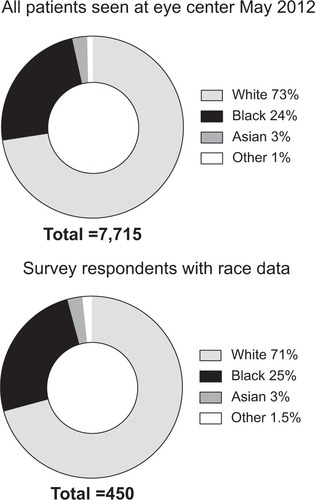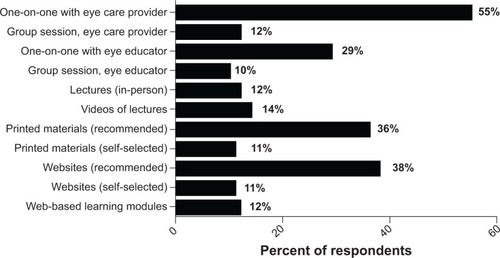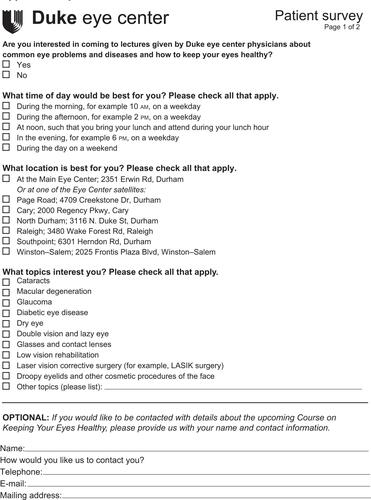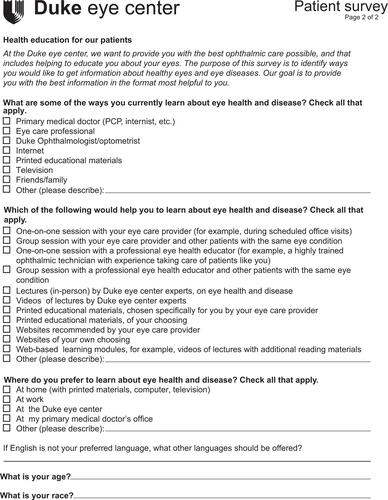Figures & data
Figure 1 Racial distribution of the eye center population and the survey respondents.

Figure 2 Preferred learning practices.

Table 1 Preferred learning practice with age and race
Table 2 Ophthalmic topics and preferred learning practice
Table 3 Ophthalmic topics of interest and age
Table 4 Ophthalmic topics of interest and race
Table 5 Current route of eye health information: age and racial characterization
Figure 3 Preferred locations for learning about ophthalmic topics.



